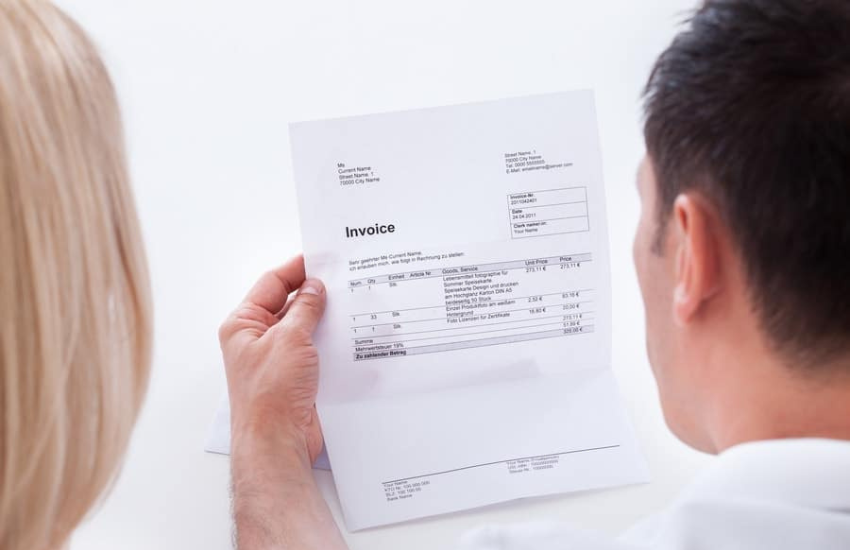Timely Invoicing: The Key to Healthy Cash Flow and Business Success

Introduction: In the business world, cash flow isn’t just important—it’s essential. Even with top-notch products, loyal clients, and a stellar reputation, delays in payment can create significant operational hurdles. Timely invoicing, therefore, isn’t just another administrative task; it’s a critical strategy for keeping your business running smoothly and thriving. Let’s explore why staying on top of invoicing is crucial and how you can make it an effortless part of your operations.
Let’s dive into why timely invoicing matters and how you can ensure it’s a seamless part of your business operations.
Why Timely Invoicing Matters:
- Improves Cash Flow Management: Cash flow is the lifeblood of any business, and timely invoicing is crucial for sustaining it. Businesses that promptly send invoices are more likely to receive payments on time, ensuring they have the funds to meet financial obligations. On the flip side, delays in invoicing can lead to late payments, which strain working capital and may force businesses to borrow or dip into reserves.
- Enhances Professionalism and Reputation: Timely invoicing showcases professionalism, which can boost your company’s reputation. It shows clients that you are organized, reliable, and value their business relationship. In contrast, irregular or delayed invoicing can raise doubts about your company’s efficiency, potentially deterring clients from future engagements.
- Reduces Administrative Burden: Chasing unpaid invoices takes up valuable time and resources. By sending invoices promptly, businesses can reduce the need for follow-ups and ensure smooth, hassle-free payments. This allows teams to focus on more impactful tasks, such as business development and customer service, instead of administrative follow-ups.
- Prevents Payment Disputes: Timely invoicing helps prevent misunderstandings and disputes over payments. When businesses provide a clear, immediate record of the services rendered or products delivered, it reduces the chances of clients disputing invoices or forgetting transaction details. This leads to smoother interactions and builds trust with clients
How Timely Invoicing Saved the Day for A Growing Design Studio: A Real-World Story:
- Problem: Sarah was great at delivering creative projects on time, but when it came to invoicing, she often delayed sending them out. Between managing clients, designing logos, and overseeing her small team, invoicing just wasn’t a priority. Sometimes she waited a week or two after completing a project to send the invoice; other times, she simply forgot. Projects were being delivered, but the money wasn’t flowing in fast enough to keep up with her growing expenses.
- The Wake-Up Call: One month, Sarah completed a major project for a new client, delivering a full brand package and website design. She was proud of the work and the client loved it. However, she got caught up with other projects and didn’t send the invoice until two weeks later. By the time the invoice was received, the client was busy with their own launch and didn’t pay until nearly a month after the invoice was issued.
This delay forced Sarah to delay payments to her own vendors and made it difficult to plan for upcoming projects. She realized she needed to take control of her invoicing process if she wanted her business to thrive and avoid this kind of financial stress. - The Solution: Automated the Invoicing Process
Best Practices for Timely Invoicing
To ensure you’re always on top of your invoicing process, consider implementing these best practices:
- Automate Your Invoices: Use invoicing software to simplify the process and minimize human mistake. Many tools allow you to automatically send invoices after a service is done.
- Set Clear Payment Terms: Include payment deadlines and penalties for late payments in your contracts.
- Maintain a Consistent Schedule: Depending on the nature of your business, set up a pattern for sending out invoices on a daily, weekly, or monthly basis.
- Offer Multiple Payment Methods: Make it easy for customers to pay by providing a variety of payment alternatives, such as credit cards, bank transfers, and digital wallets.
Myth-Busting
| Myth | Reality |
| Clients prefer to receive invoices only after project completion. | Clients appreciate receiving invoices promptly, as it helps them manage their budgets and cash flow. |
| Late invoicing doesn’t affect client relationships. | Delays in invoicing can lead to misunderstandings and damage trust. |
| Automated invoicing is impersonal. | Automation can enhance professionalism and accuracy in billing. |
| Timely invoicing only benefits the service provider. | Timely invoicing benefits both parties by ensuring clear expectations and financial planning. |
| Sending an invoice is the last step in the process. | Invoicing is part of a continuous communication loop with clients |
Conclusion
Timely invoicing is a simple yet powerful tool that can significantly impact the business’s cash flow, reputation, and efficiency. By establishing a consistent invoicing routine and leveraging automation, businesses can avoid the pitfalls of delayed payments and improve their overall financial health.
